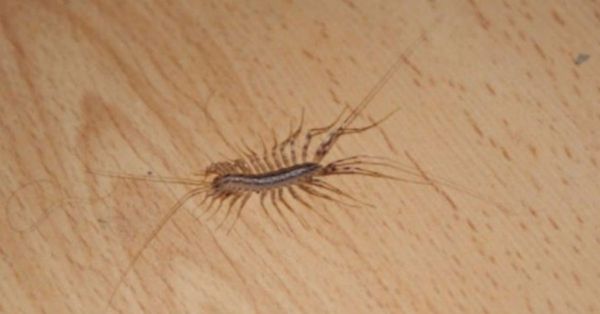Do you feel a sense of disgust and the urge to eliminate any insects you come across in your home? It’s completely understandable, especially when some of them can be dangerous and carry toxins that can lead to painful and even fatal stings.

But, before you squish that house centipede you found in your bathroom, consider this: they might actually be doing you a favor. Centipedes, despite their creepy appearance, play a crucial role in keeping your home free from other little pests.
These fast-moving creatures have been silently defending your home against unwanted guests such as cockroaches, spiders, silverfish, bedbugs, and ants. They have a ferocious appetite and are known to devour any arthropods they come across. So, instead of crushing them, why not show some appreciation and let them be?
Now, I’m not suggesting you invite hordes of centipedes into your home. But sparing the occasional one or two you find as a token of gratitude seems like a fair deal. Just let them walk away or gently remove them outdoors where they can find some leaves to feast on.
Here’s another reason to think twice before squishing every insect you encounter: you might inadvertently release hundreds of baby spiders into your home if you squash a spider. Trust me, it’s not a sight you want to see.

As for centipedes, they’re really not that bad. Apart from giving you a fright, they’re just harmless little creatures that lack the strength to cause serious harm. Plus, unlike other insects, they don’t spread germs all over your home. That’s why they’re the good guys!
Now, let’s talk about the insects you should truly be concerned about. These insects are carriers of deadly diseases that can be life-threatening if not treated properly. Here are a few of the deadliest bugs you should pray you never encounter in your home:
- Bullet ants: With a bite that feels like being shot, these large ants are found in the rainforests of Nicaragua and Paraguay.
- Botfly: Although the botfly itself is not the problem, its larvae are internal parasites that can cause severe skin tissue changes and infections.
- Fleas: These blood-feeding insects not only cause skin irritation and itching but can also lead to skin infections.
- Fire ants: Known for their painful stings that leave white pustules on the skin, fire ants can cause allergic reactions in some people.
- Kissing bug: These bugs are infamous for biting the lips of their victims and are responsible for transmitting the trypanosome cruzi parasite, which leads to thousands of deaths annually.
- Giant Japanese Hornet: With a powerful sting that kills about 40 people each year, these hornets are the largest of their kind, growing up to 2 inches in size.
- Tsetse Flies: Found in Africa, these flies transmit sleeping sickness, causing half a million deaths on the continent each year.
- Killer Bees: Swarmingly aggressive, these bees can be fatal due to their overwhelming numbers and fierce attacks.
- Driver ants: These ants have powerful mandibles that deliver painful bites, and they are capable of killing multiple animals in a single raid.
- Mosquitoes: Perhaps the deadliest creatures on Earth, mosquitoes are responsible for approximately 1 million deaths each year from diseases such as malaria, yellow fever, West Nile virus, and encephalitis.
So, the next time you come across a house centipede or another creepy-crawly in your home, remember that not all insects are the enemy. In fact, some of them, like centipedes, are helping to keep your home free from other unwanted guests. Instead of squishing them, show a little gratitude and let them carry on with their insect control duties.
Just remember to avoid the truly dangerous insects and take necessary precautions to protect yourself and your home.